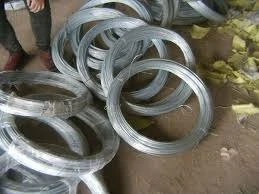Netting Solutions for Effective Fence Protection and Enhanced Security Options
The Essential Guide to Netting Fences Benefits, Types, and Installation
In an age where securing properties and creating safe environments is paramount, netting fences have emerged as a versatile solution. These specially designed barriers offer not only a formidable sense of security but also serve a variety of purposes across different settings. Let’s explore the benefits, types, and installation practices of netting fences.
Benefits of Netting Fences
1. Enhanced Security One of the primary advantages of netting fences is their ability to deter intruders. The dense mesh design makes it challenging to climb or cut through, providing a robust barrier for residential and commercial properties alike. Additionally, many netting fences are complemented by gates or other security features, enhancing their effectiveness.
2. Visibility and Aesthetics Unlike traditional solid fences, netting fences allow for visibility, making them an excellent choice for areas that require an open feel. This is particularly beneficial for gardens or swimming pools, where maintaining a visual connection with nature is desired. The design can also enhance the aesthetic appeal of a property, giving it a modern and sleek appearance.
3. Cost-Effective Building a traditional fence can be expensive. Netting fences are typically more affordable and can be easily installed without the need for extensive foundation work or professional help. This makes them a popular choice for budget-conscious homeowners.
4. Environmental Friendliness Many netting fences are made from recycled materials, such as plastic or metal, which can be environmentally friendly. Furthermore, their design allows for air and light to pass through, benefiting the flora and fauna in the surrounding area.
5. Versatility Netting fences can be utilized in a range of settings, including agricultural areas to protect crops from animals, sports fields to delineate boundaries, and residential properties for yard protection. Their adaptability makes them invaluable in various scenarios.
Types of Netting Fences
There are several different types of netting fences available, each tailored to specific needs
- Chain Link Fences These are made from interlocking steel wires and are one of the most common types of netting fences. They provide a sturdy and reliable barrier while maintaining visibility.
- Welded Wire Fences These fences consist of vertical and horizontal wires that are welded together. They offer greater strength and are often used in agricultural settings for livestock containment.
netting fence

- Mesh Fences Made from softer materials like plastic or nylon, mesh fences are lightweight and easy to install. They are perfect for temporary enclosures or areas where a strong wind barrier is needed.
- Electric Fences Combining netting with electrical elements, these fences serve as both a deterrent and an actual barrier. They are commonly used for livestock management and security.
Installation Tips
Installing a netting fence may seem daunting, but with proper planning and execution, it can be quite manageable. Here are some tips
1. Choose the Right Type Determine your needs before selecting a type of netting fence. Consider factors like the level of security, intended use, and environmental conditions.
2. Plan the Layout Mark the area where the fence will be installed. Ensure that the boundaries are clear and that you have appropriate permissions if necessary.
3. Gather Materials Depending on the type of netting fence you choose, gather all necessary materials, including posts, nets, and any additional hardware.
4. Install Posts Begin by installing sturdy posts at appropriate intervals along your marked boundary. Ensure they are well anchored to withstand pressure.
5. Attach Netting Once the posts are in place, carefully attach the netting, ensuring it is taut for maximum effectiveness. Be mindful of any overlapping sections to prevent gaps.
6. Finishing Touches Finally, inspect your installation, making any necessary adjustments for durability and aesthetics.
Conclusion
Netting fences are an excellent choice for anyone looking to enhance their security, maintain visibility, and enjoy a cost-effective fencing solution. With various types and straightforward installation processes, these fences can cater to a myriad of needs, making them a valuable asset in any property owner’s toolkit. Whether you’re looking to protect your garden, secure livestock, or delineate a sports area, a netting fence is certainly worth considering.
-
Space-Saving Chain Fence Hacks Vertical Gardening with Cyclone MeshNewsJul.16,2025
-
Innovations in Iron Nail Wire Production for Modern ConstructionNewsJul.16,2025
-
Creative Uses of Wire Netting Fence in Modern Landscape DesignNewsJul.16,2025
-
Barbed Wire Fence Innovations in Anti-Climb TechnologyNewsJul.16,2025
-
Architectural Uses of Umbrella Nails for Aesthetic Roof DesignsNewsJul.16,2025
-
Architectural Uses of Razor Barbed Wire in Secure Urban DesignNewsJul.16,2025




